#Paperless payroll software
Explore tagged Tumblr posts
Text
Expert payroll outsourcing services
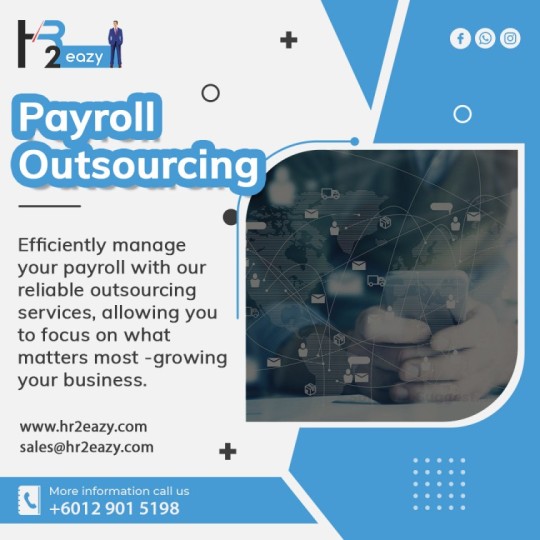
Tired of the payroll hassle? Don't worry, HR2eazy's payroll outsourcing services are designed to simplify your payroll processes and save you valuable time and resources. Our team of experts with the help of our advanced HRMS software provides you with reliable, efficient, and confidential payroll services. Get a free demo now! Click here
#Paperless payroll software#best payroll software#payroll software Malaysia#complete payroll system#payroll outsourcing Malaysia#payroll outsourcing services#Best payroll outsourcing
0 notes
Text
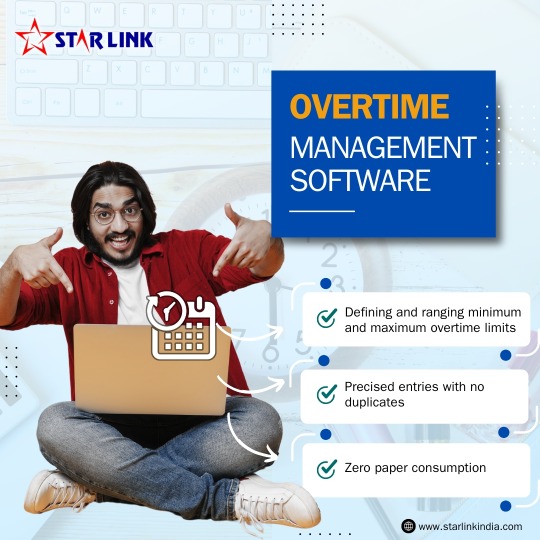
Optimize Workforce Efficiency with Star Link’s Overtime Management Software!
⏳ Key Features: ✔ Define & control overtime limits ✔ Accurate, duplicate-free tracking ✔ 100% paperless & eco-friendly
📢 Eliminate payroll errors & improve compliance effortlessly! 📅 Schedule your demo today: www.starlinkindia.com
0 notes
Text
end-to-end software for Freight Forwarding/ Removal
Hi!
Have a Good Day!
Greetings from QuickMove Technologies!
QuickMove is end-to-end software for Freight Forwarding/ Removal / Warehousing/ Transport/ Last mile Delivery.
We are into the Logistic industry for the past 15 years serving clients across Asia, Middle East, America, Africa, Europe, South East, and Oceania more than 300+ clients.
Why QuickMove?
· Customizable Dashboard & Reports
· All in one platform - CRM, ERP,ACCOUNTS, PAYROLL, HR, CUSTOMER PORTAL,LABEL & MOBILE APPS
· Digitalize business & transform into paperless (BL, AWL, LR, Manifest, Export Declaration, Arrival Notice, Pre Alert, PO, etc)
· Automates process from Enquiry to Delivery Note
· Monitor and analysis business at your fingertips.
· Integrated with email, SMS/Text Message , WhatsAPP, Calendar, Notification, Work Flow Engine
· Online Quote, Invoice, Rate request, Survey, Feedback, Complaints, Order Confirmation, etc
· Multi Container, Shipment Consolidation, Crew & Material Management
· Multi Country, Multi Branch, Multi Currency, Multi Tax , E Invoice
· Warehouse ,Put away, Pick List, Transit Storage, etc
· Vendor Management, Purchase & Trading
· Accounting, Payroll, HR
· Labeling Solution (QR/BAR Code)
· Track Status, Customer Login
We would like to understand your pain areas, existing leakages & GAPS and suggest you the best solutions which helps to scale up and efficiently manages the business. Please let us know your available date and time for a detailed demo
0 notes
Text
Employee Records Management Practices for HR Excellence

The foundation of effective human resource operations is the administration of employee records. It entails the methodical gathering, preserving, and upkeep of data about employees. In addition to ensuring compliance, good employee records management improves decision-making, fosters organizational expansion, and protects confidential information. The principles, advantages, and best practices for efficiently handling personnel records are examined in this article.
Key Components of Employee Records Management
Personal Information
Basic details.
Employment History
Job applications, resumes, contracts, and promotion or transfer details.
Performance and Training Records
Appraisal reports, training certifications, and skill development programs.
Compensation and Benefits
Salary details, bonuses, insurance, and retirement plan documentation.
Attendance and Leave Records
Timesheets, leave applications, and attendance logs.
Compliance Documentation
Tax forms, legal agreements, and immigration paperwork.
Best Practices for Employee Records Management
Digitization
The transition from paper-based systems to digital platforms for easier access and storage.
Data Security Measures
Implement encryption, firewalls, and secure access protocols to protect records.
Regular Audits
Conduct periodic reviews to ensure data accuracy and compliance with regulations. It works better in the streamlined integration with platforms like a leave management system.
Retention Policies
Define clear timelines for retaining and disposing of records based on legal requirements.
Access Control Systems
Use role-based permissions to limit access to sensitive employee information.
Cloud-Based Solutions
Leverage cloud storage for scalability and remote accessibility.
Employee Self-Service Portals
Allow employees to update their records and access documents independently. You can easily attach asset management software to this specific feature or function.
Role of Technology in Employee Records Management
Modern employee records management systems (ERMS) automate and simplify record-keeping processes. Features include:
Centralized Storage: Consolidates all records in a unified database.
Search and Retrieval: Enables quick access to specific documents.
Integration with HR Tools: Connects with payroll, performance management, and recruitment systems.
Audit Trails: Tracks changes to records for accountability.
Customizable Dashboards: Provides insights into workforce trends and compliance statuses.
Future Scope and Potential of Employee Records Management
AI and Machine Learning
Automates data categorization, anomaly detection, and predictive analytics.
Blockchain Technology
Enhances record authenticity and security through tamper-proof systems.
Mobile Accessibility
Allows HR teams and employees to manage records via mobile apps.
Advanced Analytics
Provides actionable insights into workforce metrics and trends.
Sustainability Focus
Encourages paperless systems, contributing to environmental conservation.
Conclusion
The success of an organization depends on the efficient management of personnel records. Businesses may guarantee data accuracy, regulatory compliance, and operational efficiency by implementing best practices and contemporary tools. Purchasing a strong employee records management system allows HR staff to concentrate on strategic projects that propel company expansion rather than merely keeping things organized.
0 notes
Text
Revolutionizing Restaurant Management with Intellibooks
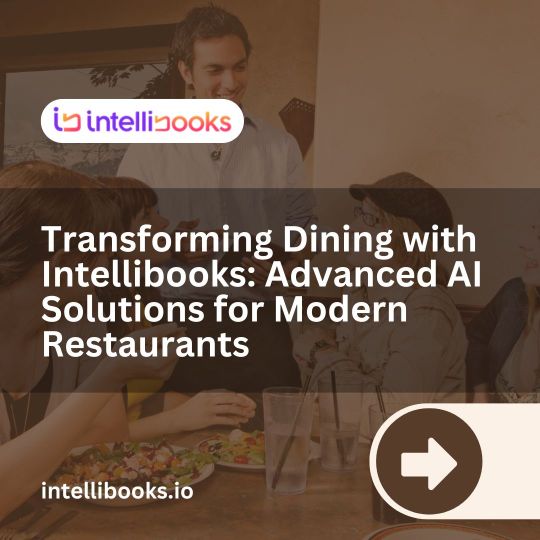
In today’s fast-paced restaurant industry, efficient management is key to success. Intellibooks offers a comprehensive suite of tools designed to streamline every aspect of running a restaurant. From seamless billing to smart inventory management, Intellibooks ensures that restaurant owners can focus on delivering quality customer service while the software takes care of the backend operations.
E-Billing for Effortless Transactions
Intellibooks brings efficiency to your billing process with its eBilling feature, allowing for fast, accurate, and paperless transactions. With this service, restaurant owners can manage multiple payment methods, generate invoices, and keep detailed records. Intellibooks ensures that every transaction is securely processed, helping restaurants enhance customer satisfaction and reduce human error.
Smart Inventory Management for Precision
Managing inventory is often one of the most challenging aspects of running a restaurant. Intellibooks tackles this challenge head-on with its smart inventory management feature. This service helps restaurant owners track stock levels, manage suppliers, and avoid over-ordering or stockouts. With real-time updates, Intellibooks enables efficient inventory handling, reducing waste and boosting profitability.
Automated Marketing Campaigns to Drive Growth
Marketing plays a crucial role in attracting and retaining customers. Intellibooks automated marketing campaigns enable restaurant owners to reach their target audience with tailored offers based on customer preferences and purchase history. This feature allows businesses to send personalized promotions via SMS, email, or social media, boosting repeat business and increasing customer loyalty.
Seamless Staff Management
Intellibooks also makes managing staff more efficient. With features like scheduling, payroll, and performance tracking, restaurant owners can easily handle employee management tasks. Intellibooks simplifies the complexities of workforce management, enabling restaurants to ensure optimal staffing and track performance, making the entire process streamlined and hassle-free.
Data-Driven Insights for Better Decision Making
Intellibooks provides restaurant owners with data-driven insights that are essential for making informed decisions. With its advanced analytics tools, Intellibooks helps restaurants analyze sales trends, customer behavior, and overall performance. By leveraging these insights, restaurant owners can make data-backed decisions to optimize operations and enhance profitability.
Boost Customer Satisfaction with Intellibooks
Customer satisfaction is at the heart of any successful restaurant. Intellibooks helps improve customer experiences by offering a smooth and efficient ordering process. Whether through its mobile POS system or kitchen order management, Intellibooks ensures orders are processed accurately and delivered on time, enhancing the overall dining experience.
Future-Proofing Restaurants with AI-Powered Features
As technology evolves, so does the restaurant industry. Intellibooks is committed to staying ahead of the curve with AI-powered features that continuously improve business operations. From predictive analytics for inventory to AI-driven customer engagement tools, Intellibooks helps restaurant owners stay competitive in a rapidly changing market.
In conclusion, Intellibooks is more than just a restaurant management system; it’s a comprehensive solution that covers all aspects of running a modern restaurant. From smart billing to innovative marketing, Intellibooks empowers restaurant owners to focus on what matters most—delivering an exceptional dining experience.
Read more about us on intellibooks.io
LinkedIn- https://www.linkedin.com/company/intellibooks/
Facebook- https://www.facebook.com/intellibooks?mibextid=LQQJ4d
Instagram- https://www.instagram.com/intelli_books/?igshid=MzRlODBiNWFlZA%3D%3D
Pinterest- https://in.pinterest.com/IntelliBooks/
Medium- https://medium.com/@intelligentblock2018
#RestaurantManagement#POSSystems#CustomerSatisfaction#FoodServiceTech#HospitalityInnovation#BusinessGrowth#EfficiencyBoost#RestaurantSuccess
0 notes
Text
How HRMS Software Can Streamline the Onboarding Process
Onboarding new employees is a critical process that sets the tone for their entire tenure within a company. Traditionally, this process has been time-consuming, paper-intensive, and prone to errors. However, the advent of HRMS software has revolutionised the way organisations approach onboarding.
By automating and streamlining various HR glossaryfunctions, HRMS software offers a comprehensive solution to optimise the onboarding process. From the initial stages of recruitment to the employee's first day and beyond, HRMS can significantly enhance efficiency and improve the overall new hire experience.
In this blog post, we will explore how HRMS software can be leveraged to streamline the onboarding process, highlighting key benefits and best practices.
Understanding the Onboarding Process
Onboarding is a strategic process designed to welcome and integrate new employees into an organisation. It's more than just paperwork; it's about creating a positive first impression, building relationships, and setting new hires up for success. A well-structured onboarding process can significantly impact employee retention, productivity, and overall job satisfaction.
Traditionally, onboarding has been a manual and time-consuming task involving numerous paperwork, multiple departments, and manual data entry. This often leads to delays, errors, and a less-than-ideal experience for new hires.
HRMS software can revolutionise this process by automating many of these tasks, streamlining communication, and providing a centralised platform for managing employee information. From the moment a candidate accepts a job offer to their first day and beyond, HRMS can play a crucial role in creating a smooth and efficient onboarding experience.
Automating Pre-Hire Processes with HRMS
The pre-hire stage is often a bureaucratic bottleneck, characterised by tasks like job posting, candidate screening, background checks, and offer letter generation. HRMS software can significantly streamline these activities, transforming the once laborious process into an efficient operation. Equipped with an Applicant Tracking System (ATS), HRMS can effectively manage the entire recruitment lifecycle, from job posting to candidate selection. Automating background checks and reference verification ensures compliance and accelerates the hiring timeline. Additionally, automated offer letter generation reduces errors and speeds up the onboarding process.
Paperless Onboarding: A Reality with HRMS
The era of paper-heavy onboarding is over. HRMS digitises and centralises the entire process, enhancing security, accessibility, and efficiency. Employee documents, from offer letters to tax forms, are securely stored and easily accessible. Digital signatures eliminate the need for physical paperwork, further streamlining the process. HRMS also facilitates seamless document sharing between HR, managers, and new hires, ensuring everyone has the necessary information. It also helps in sharing exit formalities. By transitioning to a paperless system, organisations not only save time and space but also contribute to environmental sustainability.
Streamlining Payroll and Benefits Setup with HRMS
Setting up payroll and benefits for new hires can be a complex and time-consuming endeavour. HRMS simplifies this process through automation. A comprehensive HRMS system includes a payroll master, a centralised repository of employee salary information and tax details, essential for accurate payroll processing. HRMS also automates salary jvcreation, ensuring correct accounting records. Benefits enrolment is streamlined as new hires can easily select their choices within the system, with deductions automatically calculated. This reduces the administrative burden for HR and provides a seamless experience for new employees.
Enhancing the New Hire Experience with HRMS
A positive onboarding experience is crucial for employee retention and engagement. HRMS contributes significantly by offering tools for effective communication, interactive training, and performance management. Welcome kits, personalised messages, and automated notifications create a warm welcome for new hires. HRMS provides a centralised platform for accessing essential information and engaging training modules. By setting clear performance expectations, HRMS supports goal setting and ongoing feedback, empowering new employees to succeed. A successful onboarding process that is HRMS-facilitated lays a solid foundation for long-term employee success.
Conclusion
In conclusion, HRMS software has emerged as a game-changer in transforming the traditionally cumbersome onboarding process into a streamlined and efficient operation. By automating tasks, digitising paperwork, and centralising information, HRMS significantly enhances the new hire experience while reducing administrative burdens for HR teams. From pre-hire processes to payroll setup and beyond, HRMS empowers organisations to create a positive and impactful onboarding journey that sets the stage for employee success and retention.
Ready to revolutionise your onboarding process? OpportuneHR offers a robust HRMS solution tailored to meet the unique needs of your organisation. Contact them today to schedule a demo and discover how they can transform your HR processes.
0 notes
Text
How MediBest’s Hospital Management Software Can Help Hospitals: A Comprehensive Guide

In the evolving landscape of healthcare, hospitals face increasing demands for efficiency, accuracy, and patient satisfaction. One of the most effective solutions to these challenges is implementing a sophisticated Hospital Management Software (HMS) from MediBest. This article explores how MediBest's HMS can transform hospital operations, streamline workflows, and ultimately enhance patient care.
What is MediBest Hospital Management Software?
MediBest Hospital Management Software is an integrated digital solution designed to manage and streamline various hospital operations. This advanced software facilitates essential functions, including patient management, financial tracking, inventory control, and administrative tasks. By automating these processes, MediBest's HMS helps hospitals achieve greater efficiency, accuracy, and compliance with industry standards.
Key Benefits of MediBest Hospital Management Software
1. Enhanced Operational Efficiency
MediBest's HMS integrates various hospital functions into a single platform, significantly improving workflow and productivity. Automated tasks such as patient scheduling, billing, and record-keeping reduce manual errors and administrative overhead, leading to smoother operations.
2. Improved Patient Care
With MediBest’s HMS, hospitals can provide superior patient care through enhanced data management and communication. Electronic Health Records (EHRs) enable real-time access to patient information, allowing healthcare providers to make informed decisions quickly. This results in timely treatments and improved patient outcomes.
3. Streamlined Administrative Processes
MediBest's software simplifies administrative tasks, including payroll, human resources, and inventory management. By handling these processes efficiently, the software frees up staff to focus more on delivering quality patient care rather than managing paperwork.
4. Data Security and Compliance
Hospitals must adhere to strict regulations regarding patient data. MediBest’s HMS offers robust security features, including encryption and access controls, ensuring that sensitive information is protected against unauthorized access and breaches. This helps hospitals comply with regulations such as HIPAA.
5. Cost Efficiency
Automating routine tasks and optimizing resource management with MediBest’s HMS can lead to significant cost savings. Fewer manual errors and better inventory management result in reduced operational costs and minimized waste.
Why Choose MediBest’s Hospital Management Software?
MediBest stands out for its comprehensive and flexible solutions. Here’s why our Hospital Management Software is a top choice for healthcare institutions:
Web-Based and Enterprise-Grade: Our platform supports hundreds of concurrent users, making it ideal for large hospitals and healthcare networks.
Scalable and Extensible: Designed for scalability, MediBest's HMS allows integration with new technologies and business functions as they emerge.
Cloud and On-Premise Deployment: We offer both cloud-based and on-premise solutions, providing flexibility to meet varying infrastructure needs.
Near Paperless Environment: MediBest’s system facilitates a digital transformation, moving towards a nearly paperless work environment for enhanced efficiency and accuracy.
Conclusion
MediBest’s Hospital Management Software is a vital tool for modernizing healthcare institutions and enhancing operational efficiency. Our state-of-the-art solution supports hospitals in achieving a near paperless environment while ensuring robust functionality and scalability. By investing in MediBest’s HMS, hospitals can improve patient care, streamline administrative processes, and achieve significant cost savings.
Ready to transform your hospital’s operations? Contact MediBest today at +91 8889904042 or visit our website https://medibest.in/ to learn more about our innovative Hospital Management Software and how it can benefit your institution.
0 notes
Text
Compare Keka vs greythr in 2024
In the ever-evolving landscape of HR software, Keka and Greythr have emerged as two popular solutions, each catering to the unique needs of businesses. As we navigate through 2024, let’s compare these two platforms to help you determine which might be the best fit for your organization.
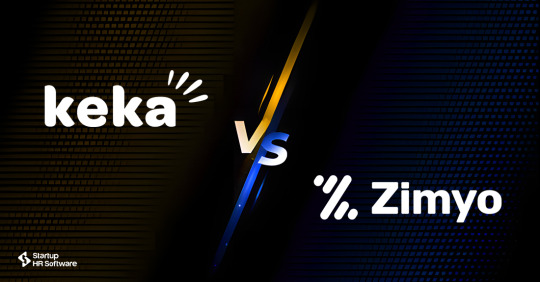
Keka: A Comprehensive HR Suite
Keka has carved out a niche as an all-in-one HR software solution with a focus on employee experience and engagement. Its features include:
User-Friendly Interface: Keka's intuitive design simplifies complex HR tasks, making it easy for users to navigate through payroll, attendance, and performance management.
Payroll Management: It offers robust payroll features with automation for tax calculations, statutory compliance, and easy disbursement. The system is known for its accuracy and reliability.
Performance Management: Keka provides tools for setting goals, tracking progress, and conducting performance appraisals, helping organizations maintain a high level of employee engagement.
Self-Service Portals: Employees and managers benefit from self-service portals that streamline HR processes and enhance transparency.
Integration Capabilities: Keka integrates seamlessly with various third-party applications, providing flexibility and expanding its functionality.
Greythr: Efficiency and Compliance Focused
Greythr is recognized for its emphasis on compliance and process efficiency. It offers a range of features that cater to different HR needs:
Streamlined Compliance: Greythr excels in ensuring adherence to labor laws and regulations. Its compliance-focused features include automated updates and statutory reports.
Payroll Processing: Like Keka, Greythr provides comprehensive payroll management but with a stronger emphasis on compliance and tax regulations.
Attendance and Leave Management: The platform offers efficient tools for tracking attendance and managing leave requests, ensuring accurate records and smooth operations.
Employee Self-Service: Greythr includes self-service portals that allow employees to manage their profiles, view payslips, and request time off, promoting a paperless environment.
Analytics and Reporting: The system provides detailed analytics and reporting capabilities, helping HR teams make data-driven decisions.
For more detail go through our blog: Keka hr vs greythr
#hr software#keka#greythr#Keka hr vs greythr#Keka vs greythr#Greythr vs keka#Greythr vs keka hr#keka hr software#Greythr software
0 notes
Photo
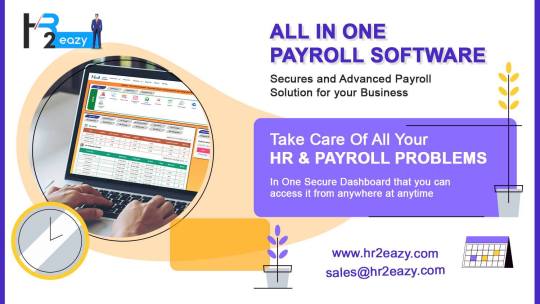
Top Rated Payroll Services in Malaysia
Payroll is an essential component of every organization. Payroll and tax obligations are necessary, but they can be complex and time-consuming. Running payroll for your employees is not an easy task. But Don't worry, HR2eazy has a team of highly experienced payroll experts who has extensive knowledge of Malaysia payroll-related regulations and requirements makes us one of the best in the market. Get a free demo now! Click Here
#Paperless payroll software#best payroll software#payroll software Malaysia#complete payroll system#payroll outsourcing Malaysia#payroll outsourcing services#Best payroll outsourcing
0 notes
Text
Digitalize HR Operations with Human Resource Management Systems
Imagine a time when compliance and paperwork are not associated with Human Resources (HR). This truth is quickly becoming apparent as the HR environment significantly changes. The demands of a multigenerational workforce, automation, and remote work present special opportunities and difficulties for HR practitioners. Two of an HR department's busiest and most time-consuming activities are payroll and benefit administration. The complexity increases rapidly in proportion to the size of the organization and the differences in benefit plans, wage scales, and tax laws.
The HR department's function has changed significantly in the last few years. To deliver a flawless employee experience, HR professionals must manage operations that are becoming more and more complicated. To satisfy these demands, organizations are finding that automation is a powerful option. Workday is one such platform that is revolutionary.
What is a Human Resource Management System (HRMS)?
The HRMS is a system software that is only intended to be used in conjunction with other HR department members to collaborate on tasks and activities. As everyone knows, HR professionals have a lot more work to do every day in the present company environment, and their responsibilities are growing every day. HRMS systems help with personnel management, including hiring, onboarding, talent management, employee experience, and more. The data management, analytics, and reporting features included in HR management systems also overlap with HRIS capability.
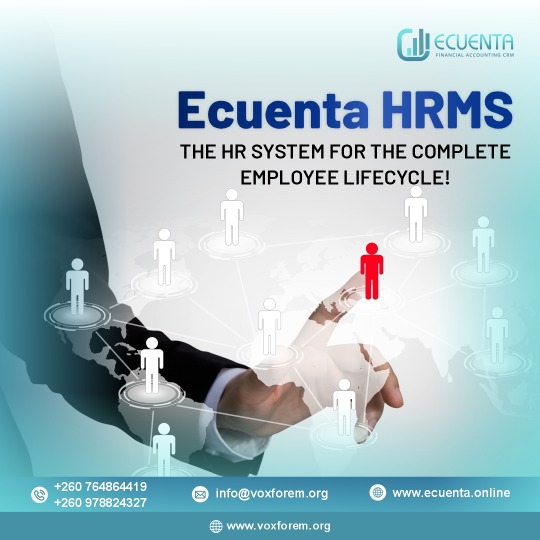
Streamlining Recruitment and On-boarding with HRMS:
Using onboarding software or a unified HR management solution will expedite your onboarding process and make it paperless and smooth. For the HR onboarding system to be adaptable and user-friendly, a new approach to onboarding is required. Faster response times for compliance and more employee engagement are two benefits of the paperless onboarding process.
The various stages of the hiring process can be completed quickly and effectively by HR experts or recruiters using automation tools. This program will be highly beneficial for handling every step of the process, from receiving applications to providing onboarding. You may be sure that the system will help you identify the right applicant for the needed employment vacancy. With customized reporting, an expert recruiting tool may add a significant amount of power to a recruiter's daily tasks and increase hiring managers' effectiveness.
Key Features of HRMS Software:
Recruitment & Hiring
Payroll management
Administrative Operations
Accessibility
Time and Attendance Management
KPI Monitoring
Project Progress Monitor
Performance Evaluation
Recruitment & Hiring:
The technology is capable of pitching the appropriate wage and optimizing a data analysis on peer positions. The HRMS's recruiting module expedites the hiring process by providing simple-to-prepare templates and recruitment follow-up. Additionally, based on predetermined criteria, candidates might be simultaneously accepted or rejected by an applicant tracking system. This speeds up the process and reduces the need to pay for placement-specific resources.
Payroll management:
Payroll administration is a multifaceted and crucial aspect of human resources that extends far beyond the mere distribution of pay stubs. Numerous payroll functions are automated by HRMS, such as earning statement computation, withholding deductions, direct deposit facilitation, and employee access to pay records (like earning statements) without requiring assistance from HR.
Administrative Operations:
Maintain comprehensive employee records, including previous work history, joining dates, and resignation letters, with ease. Efficiently manage multi-level staff information, building rental contracts, company utility bill payments, and office asset details such as computers and machinery.
Accessibility:
Even in this day and age, one of the biggest issues HR teams deal with is accessibility or mobility. Teams in HR and their employees can now work remotely. The emergence of remote working options and a hybrid work culture deserves the credit. Still, problems with mobility and accessibility arise. Teams today require a tool that can be accessed from any location and device. It shouldn't interfere with regular HR operations and people management tasks. As a result, HR professionals want a reliable HR management system. Workflow automation is not feasible otherwise. The completion of projects and the achievement of monthly goals may be delayed.
Time and Attendance Management:
Time is money, they say, and in the realm of HR, this adage rings especially true. The Time and Attendance Management feature acknowledges and records the value of every fleeting moment. This robust tool doesn't merely clock in hours; it delves into the intricacies of meticulous time tracking, balanced with efficient leave management software. Whether it's overseeing leaves, managing vacations, or ensuring timely attendance, this feature is your reliable sentinel. Should curiosity beckon about attendance patterns or occasional tardiness issues, the feature's insightful reports stand ready to illuminate, offering clarity and actionable insights.
KPI Monitoring:
For every new project, establishing key performance indicators (KPIs) is essential. Setting KPIs for the company or specific projects enables the team to make informed decisions about utilizing human resources optimally and cost-effectively. Overall, performance measurement is crucial for setting company goals and achieving business objectives.
Project Progress Monitor:
Firstly, progress monitoring, tracking, and reporting are essential collaborative processes. HRMS software can aggregate data from various sources and generate visual reports on project progress across different areas. This capability enables project managers to accurately compare current progress against the original schedule.
Performance Evaluation:
HRMS effectively streamlines the evaluation procedure by considering KPAs and KRAs. It provides more impartial and transparent data on each employee's attendance and timeliness. Knowledge management becomes successful and enhances abilities through training and development when combined with an individual productivity tracker.
Implementing HRMS in Your Organization:
The value of human resource management software, often known as HRIS or HRMS, has long been recognized by the general public. The use of HR software has numerous benefits. The application offers numerous advantages, including the capacity to automate routine company chores, optimize all business processes, efficiently monitor employee behaviors and business conduct, and furnish insights to facilitate timely decision-making inside the corporate entity. Without question, human resource management software is essential to the business's future success. Ensure you select an HRMS that aligns with your organization's requirements and budget by analyzing your needs, evaluating features and functionalities, researching vendors, and understanding the costs and potential return on investment.
Conclusion:
Ultimately, implementing HRMS software brings numerous benefits across various aspects of organizational operations. It enhances administrative efficiency, boosts employee engagement, and ensures compliance, acting as a catalyst for organizational success in the digital age. By leveraging technology to streamline HR processes, organizations can maximize efficiency, optimize resources, and drive sustainable growth in an ever-evolving business landscape.
#hrms#human resource management#human resource management system#human resource management software#human resource management software in zambia#hrms software in zambia
0 notes
Text
Employee Records Management Practices for HR Excellence

The foundation of effective human resource operations is the administration of employee records. It entails the methodical gathering, preserving, and upkeep of data about employees. In addition to ensuring compliance, good employee records management improves decision-making, fosters organizational expansion, and protects confidential information. The principles, advantages, and best practices for efficiently handling personnel records are examined in this article.
Key Components of Employee Records Management
Personal Information
Basic details.
Employment History
Job applications, resumes, contracts, and promotion or transfer details.
Performance and Training Records
Appraisal reports, training certifications, and skill development programs.
Compensation and Benefits
Salary details, bonuses, insurance, and retirement plan documentation.
Attendance and Leave Records
Timesheets, leave applications, and attendance logs.
Compliance Documentation
Tax forms, legal agreements, and immigration paperwork.
Best Practices for Employee Records Management
Digitization
The transition from paper-based systems to digital platforms for easier access and storage.
Data Security Measures
Implement encryption, firewalls, and secure access protocols to protect records.
Regular Audits
Conduct periodic reviews to ensure data accuracy and compliance with regulations. It works better in the streamlined integration with platforms like a leave management system.
Retention Policies
Define clear timelines for retaining and disposing of records based on legal requirements.
Access Control Systems
Use role-based permissions to limit access to sensitive employee information.
Cloud-Based Solutions
Leverage cloud storage for scalability and remote accessibility.
Employee Self-Service Portals
Allow employees to update their records and access documents independently. You can easily attach asset management software to this specific feature or function.
Role of Technology in Employee Records Management
Modern employee records management systems (ERMS) automate and simplify record-keeping processes. Features include:
Centralized Storage: Consolidates all records in a unified database.
Search and Retrieval: Enables quick access to specific documents.
Integration with HR Tools: Connects with payroll, performance management, and recruitment systems.
Audit Trails: Tracks changes to records for accountability.
Customizable Dashboards: Provides insights into workforce trends and compliance statuses.
Future Scope and Potential of Employee Records Management
AI and Machine Learning
Automates data categorization, anomaly detection, and predictive analytics.
Blockchain Technology
Enhances record authenticity and security through tamper-proof systems.
Mobile Accessibility
Allows HR teams and employees to manage records via mobile apps.
Advanced Analytics
Provides actionable insights into workforce metrics and trends.
Sustainability Focus
Encourages paperless systems, contributing to environmental conservation.
Conclusion
The success of an organization depends on the efficient management of personnel records. Businesses may guarantee data accuracy, regulatory compliance, and operational efficiency by implementing best practices and contemporary tools. Purchasing a strong employee records management system allows HR staff to concentrate on strategic projects that propel company expansion rather than merely keeping things organized.
0 notes
Text
Digitalize HR Operations with Human Resource Management Systems
Imagine a time when compliance and paperwork are not associated with Human Resources (HR). This truth is quickly becoming apparent as the HR environment significantly changes. The demands of a multigenerational workforce, automation, and remote work present special opportunities and difficulties for HR practitioners. Two of an HR department's busiest and most time-consuming activities are payroll and benefit administration. The complexity increases rapidly in proportion to the size of the organization and the differences in benefit plans, wage scales, and tax laws.
The HR department's function has changed significantly in the last few years. To deliver a flawless employee experience, HR professionals must manage operations that are becoming more and more complicated. To satisfy these demands, organizations are finding that automation is a powerful option. Workday is one such platform that is revolutionary.
What is a Human Resource Management System (HRMS)?
The HRMS is a system software that is only intended to be used in conjunction with other HR department members to collaborate on tasks and activities. As everyone knows, HR professionals have a lot more work to do every day in the present company environment, and their responsibilities are growing every day. HRMS systems help with personnel management, including hiring, onboarding, talent management, employee experience, and more. The data management, analytics, and reporting features included in HR management systems also overlap with HRIS capability.
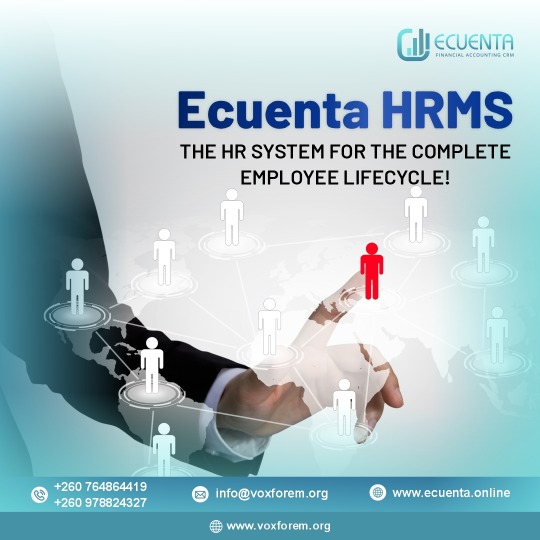
Streamlining Recruitment and On-boarding with HRMS:
Using onboarding software or a unified HR management solution will expedite your onboarding process and make it paperless and smooth. For the HR onboarding system to be adaptable and user-friendly, a new approach to onboarding is required. Faster response times for compliance and more employee engagement are two benefits of the paperless onboarding process.
The various stages of the hiring process can be completed quickly and effectively by HR experts or recruiters using automation tools. This program will be highly beneficial for handling every step of the process, from receiving applications to providing onboarding. You may be sure that the system will help you identify the right applicant for the needed employment vacancy. With customized reporting, an expert recruiting tool may add a significant amount of power to a recruiter's daily tasks and increase hiring managers' effectiveness.
Key Features of HRMS Software:
Recruitment & Hiring
Payroll management
Administrative Operations
Accessibility
Time and Attendance Management
KPI Monitoring
Project Progress Monitor
Performance Evaluation
Recruitment & Hiring:
The technology is capable of pitching the appropriate wage and optimizing a data analysis on peer positions. The HRMS's recruiting module expedites the hiring process by providing simple-to-prepare templates and recruitment follow-up. Additionally, based on predetermined criteria, candidates might be simultaneously accepted or rejected by an applicant tracking system. This speeds up the process and reduces the need to pay for placement-specific resources.
Payroll management:
Payroll administration is a multifaceted and crucial aspect of human resources that extends far beyond the mere distribution of pay stubs. Numerous payroll functions are automated by HRMS, such as earning statement computation, withholding deductions, direct deposit facilitation, and employee access to pay records (like earning statements) without requiring assistance from HR.
Administrative Operations:
Maintain comprehensive employee records, including previous work history, joining dates, and resignation letters, with ease. Efficiently manage multi-level staff information, building rental contracts, company utility bill payments, and office asset details such as computers and machinery.
Accessibility:
Even in this day and age, one of the biggest issues HR teams deal with is accessibility or mobility. Teams in HR and their employees can now work remotely. The emergence of remote working options and a hybrid work culture deserves the credit. Still, problems with mobility and accessibility arise. Teams today require a tool that can be accessed from any location and device. It shouldn't interfere with regular HR operations and people management tasks. As a result, HR professionals want a reliable HR management system. Workflow automation is not feasible otherwise. The completion of projects and the achievement of monthly goals may be delayed.
Time and Attendance Management:
Time is money, they say, and in the realm of HR, this adage rings especially true. The Time and Attendance Management feature acknowledges and records the value of every fleeting moment. This robust tool doesn't merely clock in hours; it delves into the intricacies of meticulous time tracking, balanced with efficient leave management software. Whether it's overseeing leaves, managing vacations, or ensuring timely attendance, this feature is your reliable sentinel. Should curiosity beckon about attendance patterns or occasional tardiness issues, the feature's insightful reports stand ready to illuminate, offering clarity and actionable insights.
KPI Monitoring:
For every new project, establishing key performance indicators (KPIs) is essential. Setting KPIs for the company or specific projects enables the team to make informed decisions about utilizing human resources optimally and cost-effectively. Overall, performance measurement is crucial for setting company goals and achieving business objectives.
Project Progress Monitor:
Firstly, progress monitoring, tracking, and reporting are essential collaborative processes. HRMS software can aggregate data from various sources and generate visual reports on project progress across different areas. This capability enables project managers to accurately compare current progress against the original schedule.
Performance Evaluation:
HRMS effectively streamlines the evaluation procedure by considering KPAs and KRAs. It provides more impartial and transparent data on each employee's attendance and timeliness. Knowledge management becomes successful and enhances abilities through training and development when combined with an individual productivity tracker.
Implementing HRMS in Your Organization:
The value of human resource management software, often known as HRIS or HRMS, has long been recognized by the general public. The use of HR software has numerous benefits. The application offers numerous advantages, including the capacity to automate routine company chores, optimize all business processes, efficiently monitor employee behaviors and business conduct, and furnish insights to facilitate timely decision-making inside the corporate entity. Without question, human resource management software is essential to the business's future success. Ensure you select an HRMS that aligns with your organization's requirements and budget by analyzing your needs, evaluating features and functionalities, researching vendors, and understanding the costs and potential return on investment.
Conclusion:
Ultimately, implementing HRMS software brings numerous benefits across various aspects of organizational operations. It enhances administrative efficiency, boosts employee engagement, and ensures compliance, acting as a catalyst for organizational success in the digital age. By leveraging technology to streamline HR processes, organizations can maximize efficiency, optimize resources, and drive sustainable growth in an ever-evolving business landscape.
#hrms#human resource management#human resource management system#human resource management software#human resource management software in zambia#hrms software in zambia
0 notes
Text
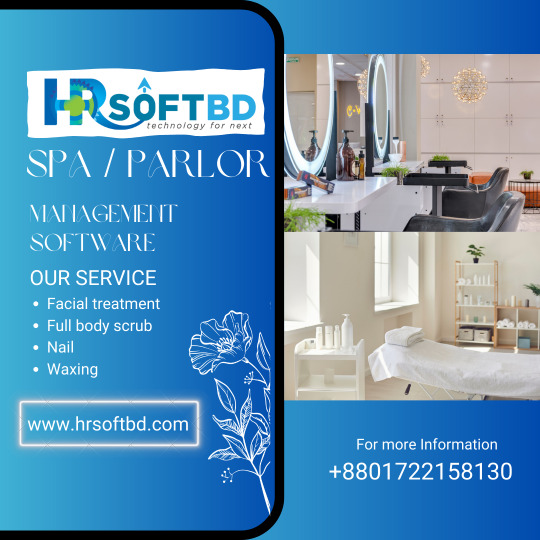
SPA/PARLOR MANAGEMENT SOFTWARE by HRSOFTBD
Booking software, point of sale, real-time data and analytics, and back-office capabilities like accounting and payroll are all included in spa management software, which is an all-in-one solution
#hrsoftbd#accounting_software_BD#bulk_sms_bd#website_development_BD#website_design_BD#app_development_BD#app_design_BD#omr_software_BD#OMR_Solution_bd#Accounting_Software_development_BD#mobile_app_design_BD#Mobile_app_development_BD#Domain_bd#hosting_BD#Ecommerce_Development_BD#ERP_solution_BD#Digital_Advocate_Dairy_BD#Salon_parlor_management_software
0 notes
Text
Ways in Which Retirement Payroll Solutions Enhance Transparency
In a webinar on “The Future of Participant Experience Innovation in the US Retirement Industry” in August 2023, Sagar Shankaranarayanan from Congruent Solutions said, “People tend to trust tech companies much more than they trust their banks,” and it is true. In the era of digital intervention, people prefer fintech apps to any other for their transparent, credible, and trustworthy.
How does this apply to retirement payroll solutions?
The first thing is to understand the market. Remember, when it comes to retirement plan administration software, which manages the vast volumes of data being collected at every touchpoint from participants, data analytics is an important area of focus in processing customer data. This will help identify customer behaviour patterns, preferences, and trends In this scenario, transparency and credibility are things that must be taken into account.
The second factor is the personalised approach. The data-driven solutions for retirement payroll software help tailor solutions according to the needs of plan participants. This enhances the overall customer experience in retirement planning, just as it has made financial products more relevant and valuable to consumers.
The third important factor is a transparent interaction. The participants must experience transparency in every term of options with the feature to share data in a more secure and thorough authentication and verification that is seamless and non-intrusive. Clear communication dissemination, simplified documentation, and less paperwork make it even more seamless.
The next factor is going paperless. Since it is a digital tool, it reduces the usage of paper and enhances tracking, trust, and transparency.
The final factor is real-time analytics. Retirement payroll solutions offer transparent insights into fund performance, contribution rates, and investment options. By providing real-time updates, participants can actively monitor their retirement savings, fostering trust and confidence in the system. These overseeing features help ensure transparency and trustworthiness for every plan participant and provider.
0 notes
Text
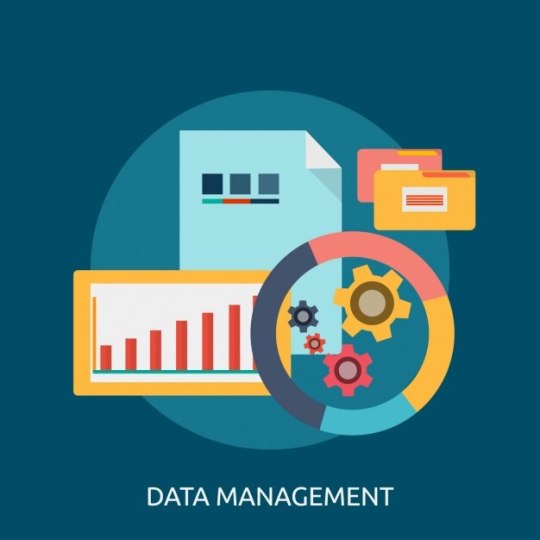
Unified Data and Resource Management - Our Features, Inventory, Accounts, and Payroll
MediBest , a leading Healthcare-IT company, offers state-of-the-art Hospital Management System software to drive digital transformation in hospitals. Our comprehensive solution stack ensures seamless management of inventory, accounts, and payroll, leading to a near paperless work environment. Our enterprise-grade platform, deployable on-premise or in the cloud, supports hundreds of users and can integrate new technologies effortlessly. Choose MediBest for unmatched hospital management software designed to maximize efficiency and longevity.
Contact MediBest at +91 8889904042 or visit https://medibest.in/.
0 notes
Text
5 Useful Tips for Effective Accounts Payable Management
In a company’s general ledger, accounts payable is a type of account that records the amount of money a business owes to its creditors. In its essence, accounts payable management is the process of streamlining and automating all payments through a payroll management system. By doing so, all payments are automated, and the chances of faulty or delayed payments are greatly minimised. It also helps a business with improving supplier relationships, reducing late payments, optimising working capital, improving contracts, and more! This article will help you explore how you can use accounts payable in a more efficient manner.
Here are 5 useful tips for effective accounts payable management:
• Go paperless
Digitisation of all records and files is highly recommended. By doing so, you are not only saving time, but also money, effort, and space. For someone to corrupt or steal your files is very easy when everything is on paper. In essence, the importance of accounts payable management is being able to make timely payments to third parties or vendors. Once your payroll management system starts automating your accounts payable, you can enjoy not having to worry about different payments at the end or beginning of the month or year.
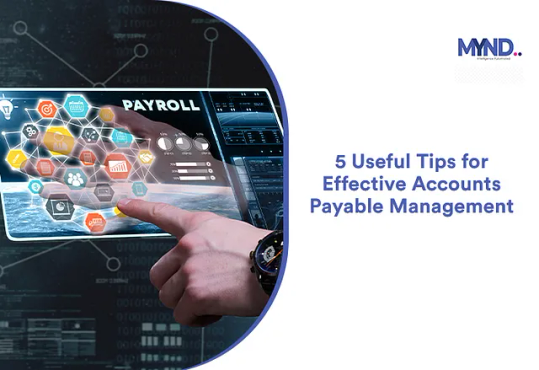
• Organise your invoices
Obviously, not all invoices will have the same amount. Some will have different amounts, some will be calculated with different guidelines, and some may need to be paid urgently for different reasons. Accounts payable management is all about simplifying processes, and this is where payroll system software��will act as a catalyst. Organise your invoices according to their due dates, final amounts, and specific payment terms to avoid any mistakes. If there are any special clauses for different contacts, you can customise the payroll system software according to your needs and requirements
• KPIs
KPIs, also known as key performance indicators, can help track the efficiency of almost anything that is quantifiable. That being said, KPIs can also help gauge how efficient your accounts payable department is. KPIs can help you track:
• Number of late payments
• Number of on-time payments
• Any cost incurred for late payments
• Accounts payable turnover ratio
…and much more, depending on your company’s needs and requirements.
• Update all supplier information
Short-term or long-term, supplier information can keep changing with respect to location changes, acquisitions, and so much more. By updating all supplier information, you can ensure that your account payable staff is up-to-date about any changes. This can help avoid any confusion and problems in the future. To do this, companies can invest in good accounts payable software that can help customise all changes and keep all information up-to-date. These software also have a supplier portal where the staff can view all updates and changes.
• Incorporate user controls
User controls are very important for accounts payable. User controls ensure that only authorised personnel have access to all important accounts payable information and updates. Here are some user controls:
• Role-based access control: This function makes sure that only those who have access to all information are able to view it. This is one of the most important functions of accounts system software.
• Audit logs: This function helps track all activity and transactions. This function is also what makes pointing out fraudulent activities easier.
• Transaction authentication: This ensures that all activity and transactions are made or authorised by a designated employee.
If you are looking to level up your third-party payments and accounts payable management in general, reach out to MYND Solutions’ highly skilled and knowledgeable team. Based on your requirements, the team at MYND can help you customise your user experience and help make the right decision in terms of the right software for you!
0 notes